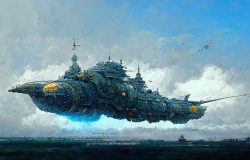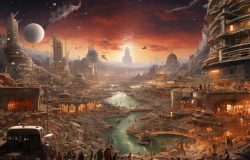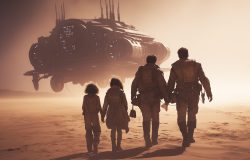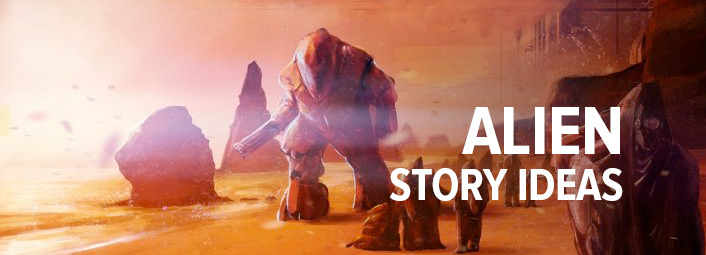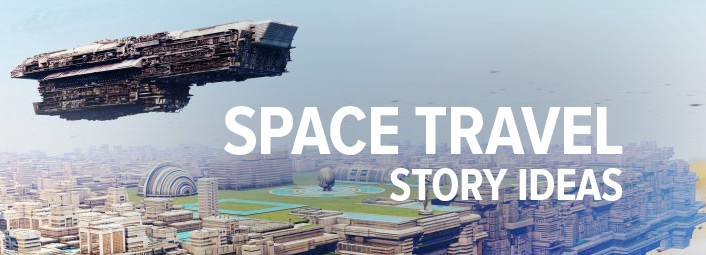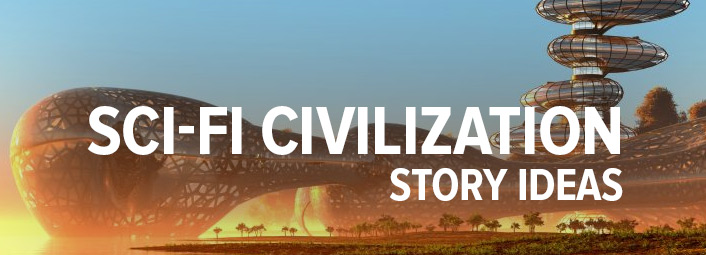100 Worldbuilding Tips For Your Next Sci-fi Story
Effective Worldbuilding requires meticulous crafting and an intricate understanding of the worlds we wish to create. So we’ve put together these 100 Worldbuilding tips to help you write a great science fiction story within creative and imaginative worlds. Crafting a compelling science fiction universe involves weaving intricate details, diverse cultures, and plausible technologies into a tapestry that captivates readers’ minds. These invaluable worldbuilding tips will serve as guiding stars in sculpting the galaxies, planets, civilizations, and technologies of your next sci-fi opus. Whether you’re a seasoned universe architect or just starting your interstellar exploration, these worldbuilding tips will undoubtedly spark inspiration and elevate the richness of your storytelling to new dimensions.
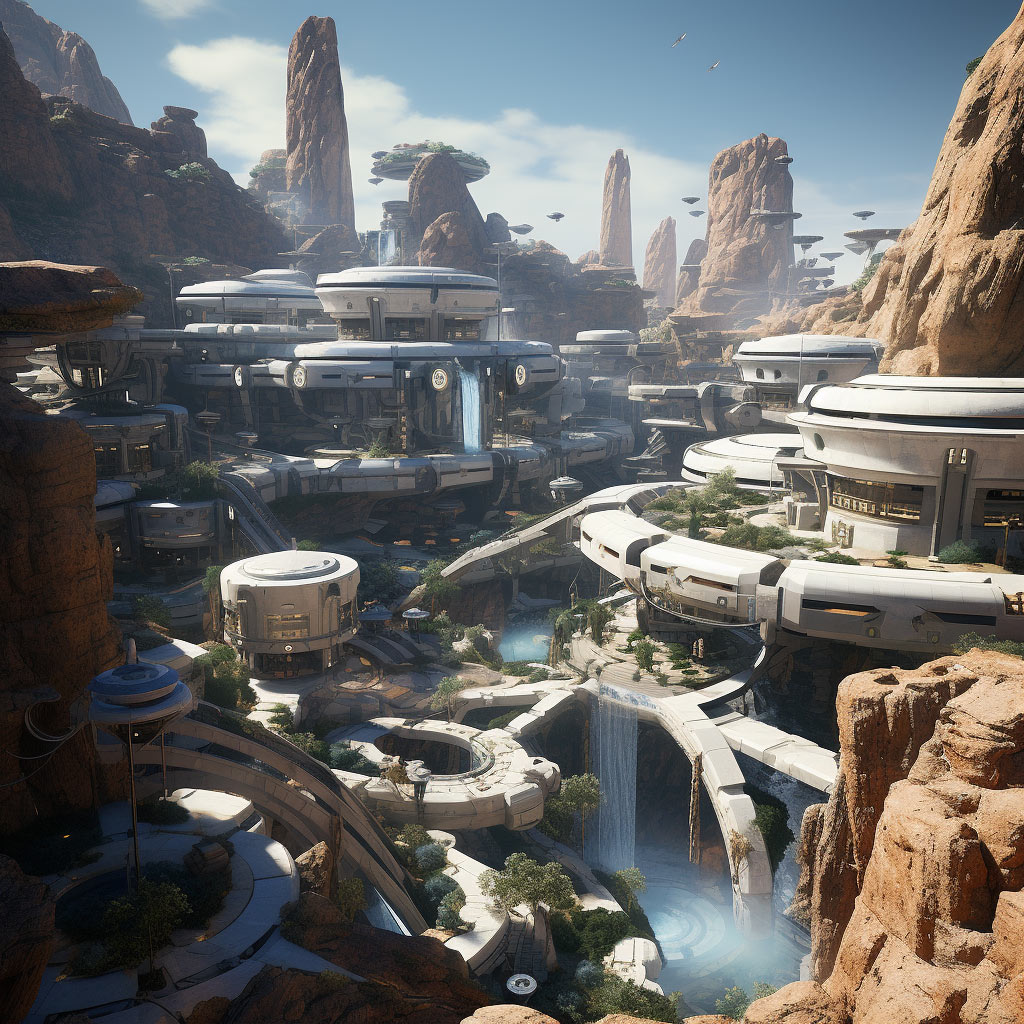
Worldbuilding Tips
- Start with a Core Concept: This involves establishing the fundamental idea or theme that drives the creation of your world. For example, in a world where magic is fading, the central theme might revolve around rediscovering lost arcane knowledge or dealing with the consequences of a diminishing magical presence.
- Map Your World: Creating maps helps visualize the geography, regions, cities, and landmarks. Detailed maps like those in Tolkien’s Middle-earth aid in understanding the world’s layout, facilitating storytelling and world immersion.
- Establish a Unique History: Develop a detailed backstory with significant events that shaped your world. This history influences current events and provides depth to the world. For instance, in “The Silmarillion” by J.R.R. Tolkien, the history of the creation of Middle-earth profoundly impacts the events of later ages.
- Cultural Diversity: Populate your world with diverse cultures, each with its own customs, traditions, languages, and beliefs. George R.R. Martin’s “A Song of Ice and Fire” series excels in showcasing diverse cultures, such as the nomadic Dothraki or the honor-bound Westerosi.
- Magic System: Establish rules and limitations if your world includes magic. Brandon Sanderson’s novels, such as the Mistborn series, meticulously define magic systems with rules like limitations based on metal types, contributing to consistency and depth.
- Technology Level: Determine the technological advancements present in different societies within your world. For example, in Frank Herbert’s “Dune,” societies with advanced technologies coexist with those relying on natural resources and complex political systems.
- Flora and Fauna: Design unique plants, animals, and mythical creatures. Creatures like J.K. Rowling’s Hippogriffs or Philip Pullman’s daemons add depth to the fictional worlds.
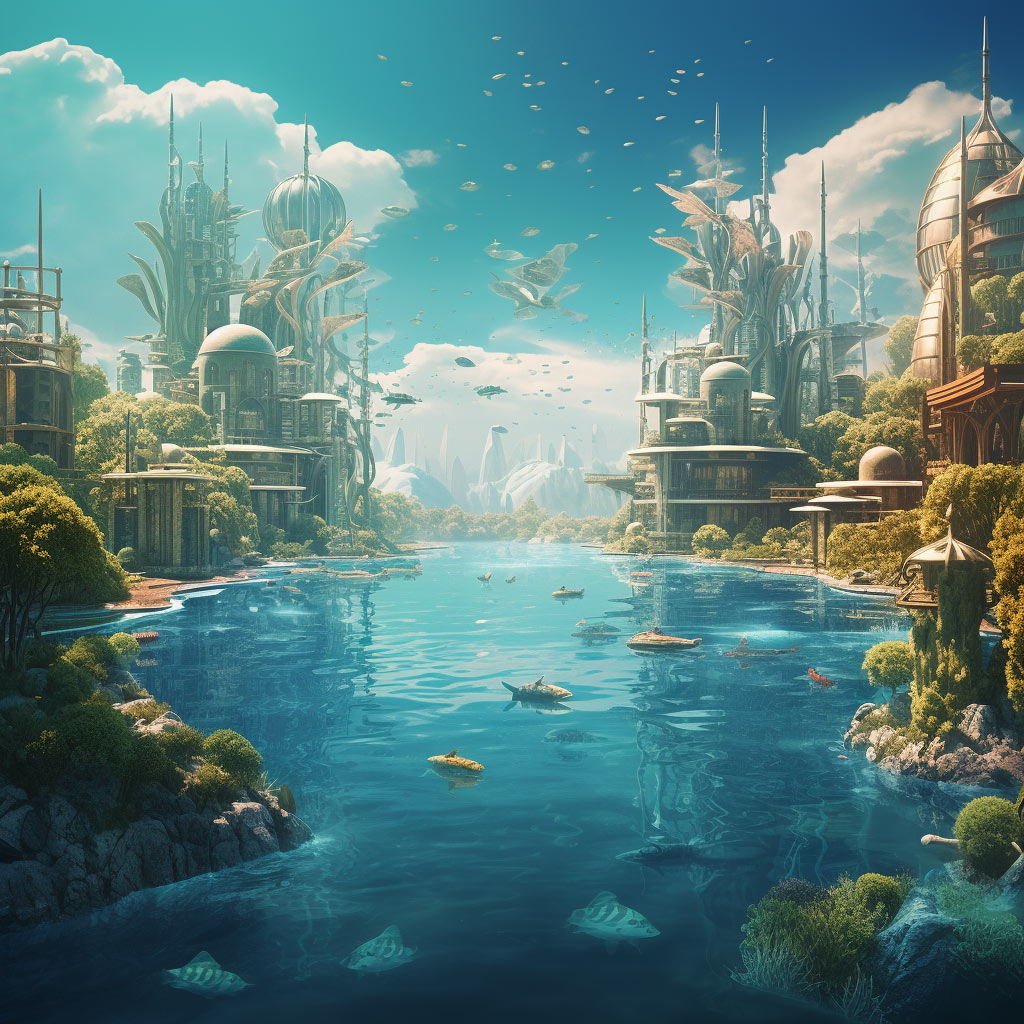
- Climate Variations: Consider how different climates affect various regions and civilizations. In “The Wheel of Time” by Robert Jordan, climate variations impact societal norms and economies across the world.
- Economy and Trade: Define trade routes, currencies, and economic systems. “The Witcher” series by Andrzej Sapkowski features diverse economies and trade relationships between kingdoms and regions.
- Conflict and Politics: Create political structures, alliances, rivalries, and power struggles. “The Lord of the Rings” showcases intricate political dynamics among races, nations, and factions vying for power.
- Religious Beliefs: Develop religions or belief systems that influence societies and individuals. In the “Foundation” series by Isaac Asimov, Hari Seldon’s psychohistory incorporates predictive elements akin to a religion, shaping the behavior of adherents.
- Create Unique Artifacts: Introduce powerful or significant items that hold cultural, historical, or magical importance. The Elder Wand in the “Harry Potter” series is an artifact with immense magical significance, influencing characters’ actions and motivations.
- Social Hierarchies: Establish social classes, hierarchies, and systems of power within societies. In Margaret Atwood’s “The Handmaid’s Tale,” the stratified society dictates roles and power dynamics among different classes, influencing character interactions and conflicts.
- Language Diversity: Design unique languages or dialects for different cultures, considering nuances and idioms. “The Lord of the Rings” features constructed languages like Elvish, adding depth to the cultures and their histories.
- Naming Conventions: Develop naming conventions that reflect the cultural backgrounds of different regions. In Brandon Sanderson’s “Stormlight Archive,” characters’ names often reflect their societal origins and roles.
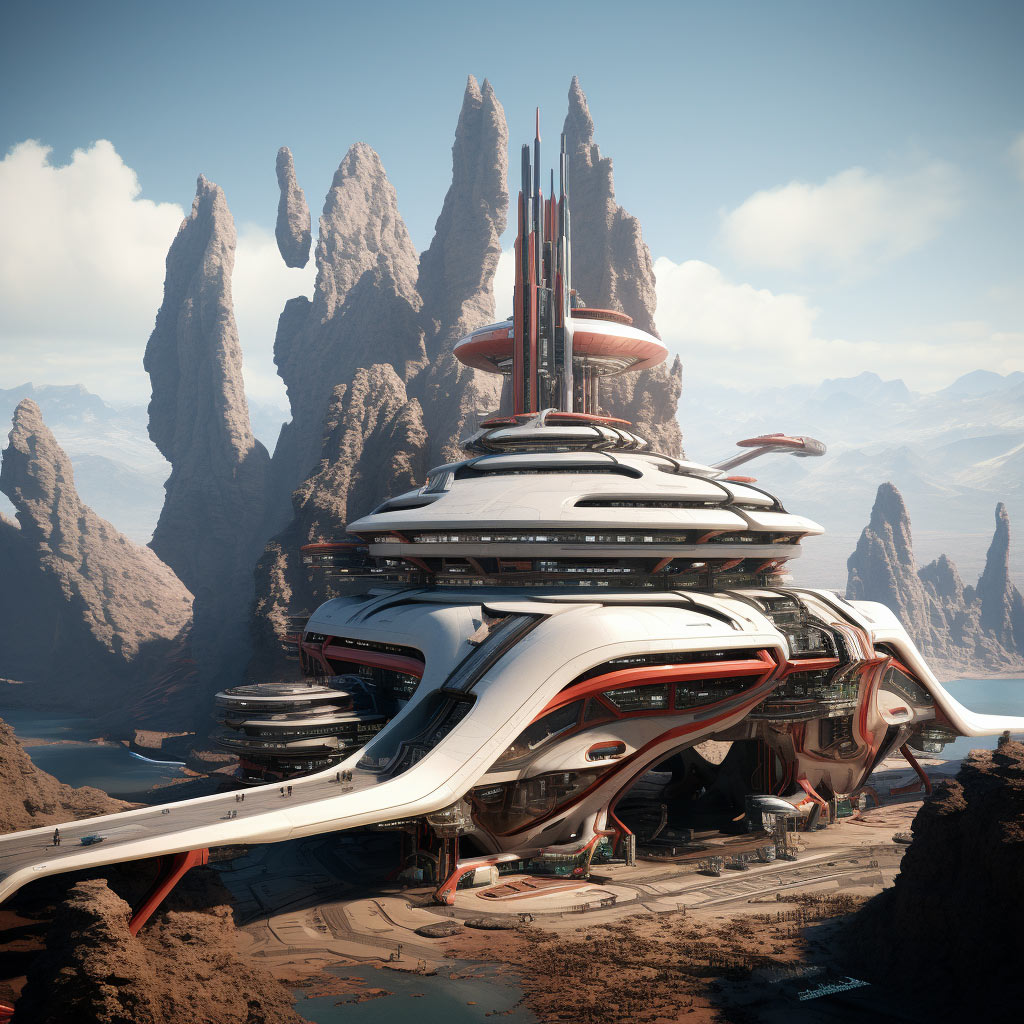
- Character Diversity: Create diverse characters with varied backgrounds, motivations, and roles in society. “A Song of Ice and Fire” by George R.R. Martin presents a wide array of characters with distinct personalities and backgrounds.
- Time Period and Era: Determine the era in which your story takes place and how it impacts the world. “1984” by George Orwell explores a dystopian future that reflects the author’s concerns about totalitarian regimes and surveillance.
- Invent Unique Holidays and Festivals: Create celebrations that are unique to different cultures or regions. “The Hunger Games” by Suzanne Collins introduces the Capitol’s extravagant and contrasting celebrations against the impoverished districts’ grim realities.
- Environmental Hazards: Include natural disasters or environmental hazards that affect your world. In N.K. Jemisin’s “The Broken Earth” series, catastrophic events like recurring apocalyptic seasons shape the world’s survival strategies.
- Cultural Taboos and Norms: Define societal norms, taboos, and unwritten rules that shape behavior. In Lois Lowry’s “The Giver,” strict societal rules dictate behavior and limit personal freedoms.
- Education Systems: Establish how knowledge is acquired and disseminated within your world. In the “Kingkiller Chronicle” by Patrick Rothfuss, the University serves as a hub of knowledge and learning, impacting characters’ development.
- Factions and Guilds: Create organizations or guilds with their own agendas, rules, and specialties. In “The Elder Scrolls” series, guilds like the Thieves Guild or Mages Guild have distinct purposes and codes of conduct.
- Family Structures: Define family dynamics, marriage customs, and inheritance systems. In “Game of Thrones,” family alliances and power struggles heavily influence the story’s progression.
- Invent Mythologies and Legends: Develop legends, myths, and folklore that shape the world’s collective imagination. In Neil Gaiman’s “American Gods,” ancient myths and gods exist alongside modern society, influencing the narrative and characters’ journeys.
- Unique Architecture: Design distinct architectural styles based on different cultures or regions. In the “Star Wars” universe, architecture varies across planets, reflecting different civilizations and environments.
- Travel and Transportation: Consider modes of transportation available and how they impact trade and communication. In “Firefly,” spacecraft serve as the primary mode of transportation, influencing trade and interactions between different worlds.
- Fashion and Clothing: Create diverse clothing styles influenced by climate, culture, and societal norms. “The Great Gatsby” showcases the fashion and societal norms of the 1920s, reflecting the era’s extravagance and societal changes.
- Art and Entertainment: Develop forms of art, entertainment, music, and literature specific to each culture. In “Blade Runner,” futuristic art forms and entertainment reflect a dystopian society’s cultural decay.
- Hidden Secrets or Mysteries: Include hidden locations, unsolved mysteries, or secret societies. In Dan Brown’s “The Da Vinci Code,” hidden symbols and mysteries drive the plot, unveiling secrets within secret societies.
- Social Issues: Address social issues relevant to your world, such as discrimination, poverty, or environmental concerns. “The Handmaid’s Tale” explores gender discrimination and reproductive rights in a dystopian society.
- Unique Flavors and Cuisine: Create diverse cuisines reflecting cultural tastes and available ingredients. “Ratatouille” showcases French cuisine and the artistry of cooking, reflecting cultural pride and diversity.
- Cultural Traditions: Establish coming-of-age rituals, marriage customs, and rites of passage. In “Avatar: The Last Airbender,” bending mastery rituals and cultural traditions play a significant role in character development.
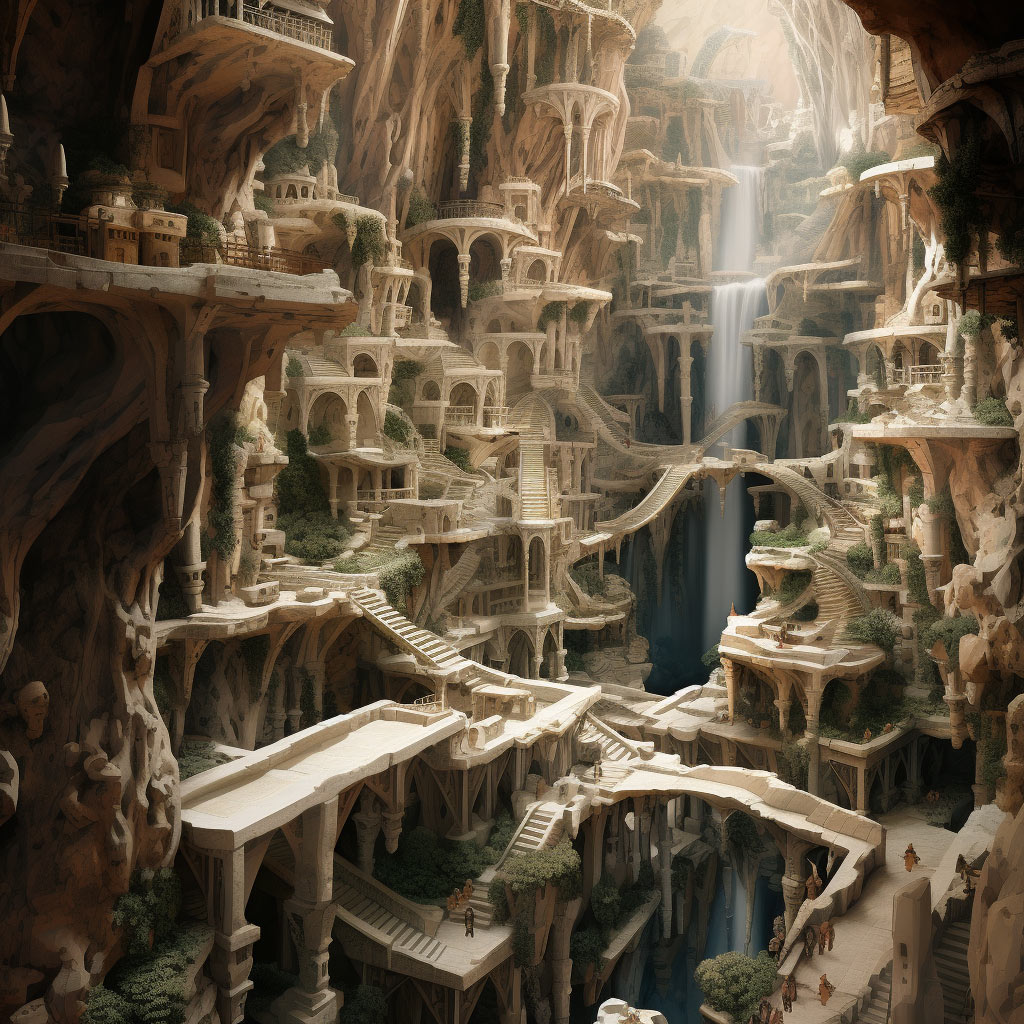
- Trade and Commerce Routes: Develop major trade routes and how they influence economies and interactions. In “Dune,” control over spice trade drives political and economic power struggles across planets.
- Communication Methods: Determine how information is communicated and exchanged between different parts of the world. In “Star Trek,” advanced communication technologies like subspace communication enable instantaneous communication across galaxies.
- Moral and Ethical Codes: Define moral compasses and ethical dilemmas prevalent in different societies. In “The Matrix,” ethical questions regarding reality and artificial intelligence challenge characters’ perceptions and choices.
- Ruins and Ancient Civilizations: Include remnants of past civilizations that add depth and mystery to your world. In “Indiana Jones,” exploring ancient ruins unveils history, artifacts, and secrets left behind by past civilizations.
- Seasonal Changes: Consider how seasons affect agriculture, festivities, and daily life. In “A Game of Thrones,” seasonal variations impact harvests, battles, and the characters’ strategies.
- Underground Societies: Create hidden or underground societies that exist apart from the mainstream culture. In H.G. Wells’ “The Time Machine,” the Morlocks live underground, contrasting with the Eloi’s surface existence.
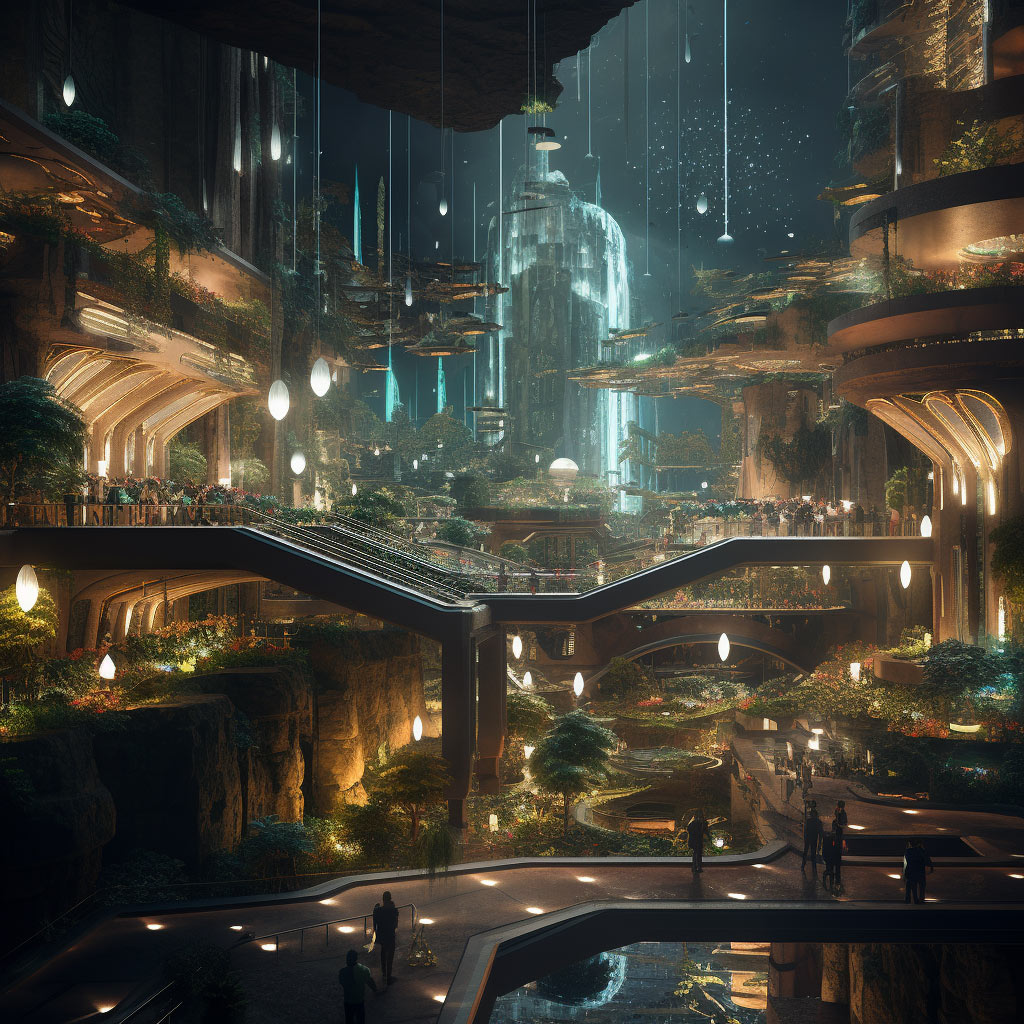
- Resource Scarcity: Introduce scarcities or resources that drive conflicts or shape societal norms. In “Mad Max: Fury Road,” a scarcity of water and fuel drives survival struggles and societal structures.
- Interstellar or Interdimensional Travel: If applicable, establish rules for travel beyond the world or between dimensions. In “Doctor Who,” the TARDIS enables interdimensional travel, allowing the Doctor to explore different times and places.
- Unique Cultural Arts: Develop unique forms of art, storytelling, or performance specific to each culture. In “Moana,” storytelling through song and dance reflects Polynesian culture and traditions.
- Political Intrigues and Espionage: Include political espionage, intrigue, and espionage between factions or nations. In “House of Cards,” political maneuvering and backstabbing drive the characters’ ambitions and conflicts.
- Medical Practices: Define medical knowledge, healing methods, and healthcare systems. In “Star Trek,” futuristic medical technology like the tricorder advances healthcare and healing practices.
- Propaganda and Media Influence: Explore how media and propaganda shape public opinion. In George Orwell’s “Animal Farm,” propaganda controls the narrative, shaping societal beliefs and behavior.
- Cultural Attitudes Toward Nature: Define how different cultures perceive and interact with the natural world. In James Cameron’s “Avatar,” the Na’vi exhibit a deep spiritual connection with nature and their environment.
- Currency and Economy: Develop currency systems and economic structures within different societies. In “The Witcher,” various kingdoms have distinct currencies and economic systems that affect trade and power dynamics.
- Laws and Justice Systems: Establish legal systems, punishments, and concepts of justice. In “Judge Dredd,” a dystopian society employs instant justice through law enforcement officers acting as judge, jury, and executioner.
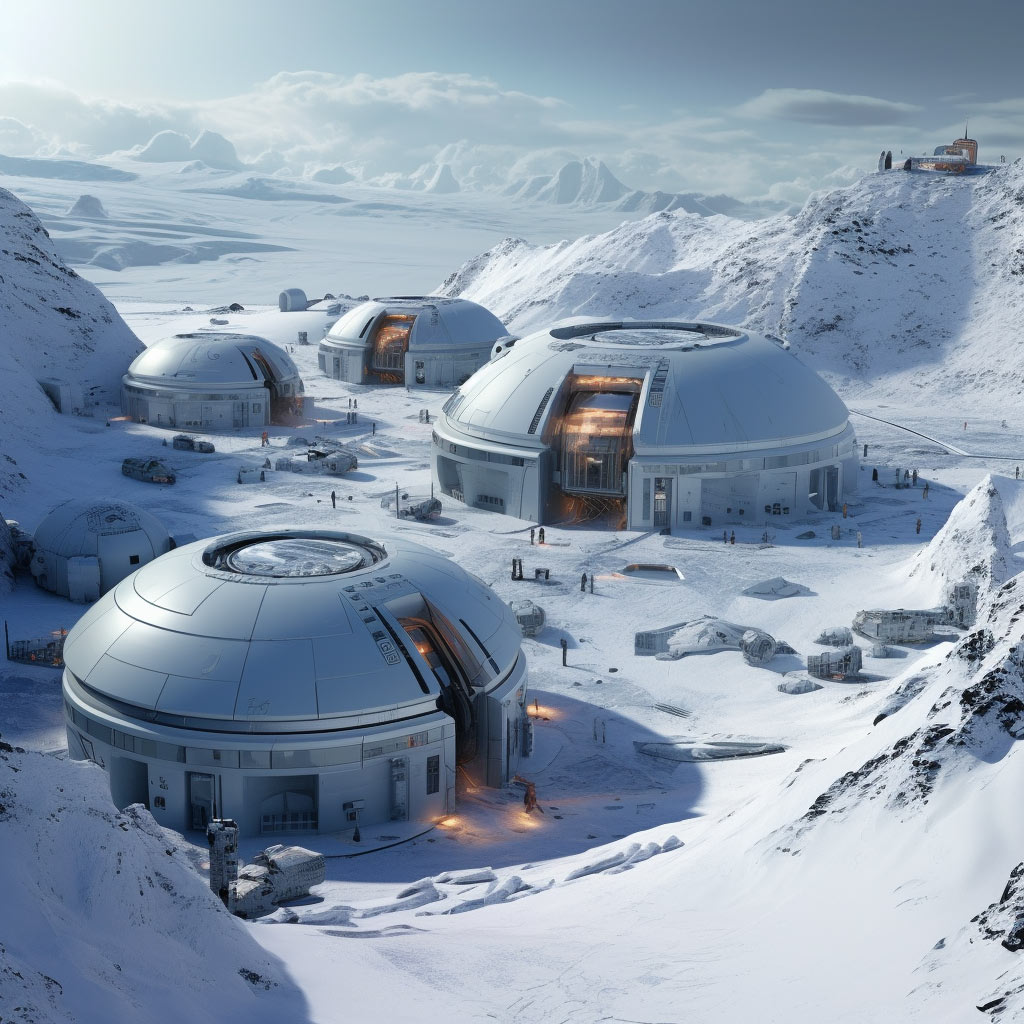
- Unique Natural Phenomena: Introduce unusual or fantastical natural occurrences within your world. In “The Chronicles of Narnia,” the wardrobe serves as a magical gateway to another world, showcasing a unique natural phenomenon.
- Festivals and Celebrations: Design unique festivals and celebrations that reflect cultural values and histories. In “Coco,” the celebration of Día de los Muertos reflects Mexican culture’s reverence for ancestors and family ties.
- Evolution of Technology: Show how technological advancements have evolved or stagnated over time. In “The Expanse” series, technological advancements in space travel and colonization shape humanity’s expansion into the solar system.
- Geopolitical Alliances: Define alliances, treaties, and diplomatic relations between nations or factions, like the NATO alliance or the Warsaw Pact in the real world.
- Agricultural Practices: Establish farming techniques, crop choices, and agricultural advancements that sustain civilizations, such as terrace farming or hydroponics.
- Digital Infrastructure: Create technological systems like the internet, virtual reality spaces, or cybernetic enhancements that influence information sharing and societal connectivity.
- Cultural Holidays for Different Ages: Design celebrations or rituals unique to different age groups, like rites of passage for adolescents or ceremonies for the elderly.
- Natural Energy Sources: Explore the use of renewable or alternative energy sources like solar, wind, or geothermal energy that power societies.
- Philosophical Movements: Introduce philosophical schools of thought or movements that shape ideologies and societal beliefs, similar to existentialism or stoicism.
- Memory-Keeping Practices: Develop traditions or technologies for preserving history and memories, such as memory crystals or oral storytelling.
- Sports and Competitions: Create unique sports or competitions specific to cultures, showcasing physical prowess or strategic thinking.
- Underwater Civilizations: Invent societies or cultures that thrive underwater, exploring technology, habitats, and societal norms beneath the seas.
- Nomadic Cultures: Construct societies based on nomadic lifestyles, exploring how they travel, trade, and adapt to various environments.
- Psychedelic or Hallucinogenic Elements: Incorporate substances or experiences that alter perceptions, offering unique cultural practices or spiritual experiences.
- Celestial Events and Astrology: Define how celestial phenomena like comets, eclipses, or planetary alignments influence beliefs or prophecies.
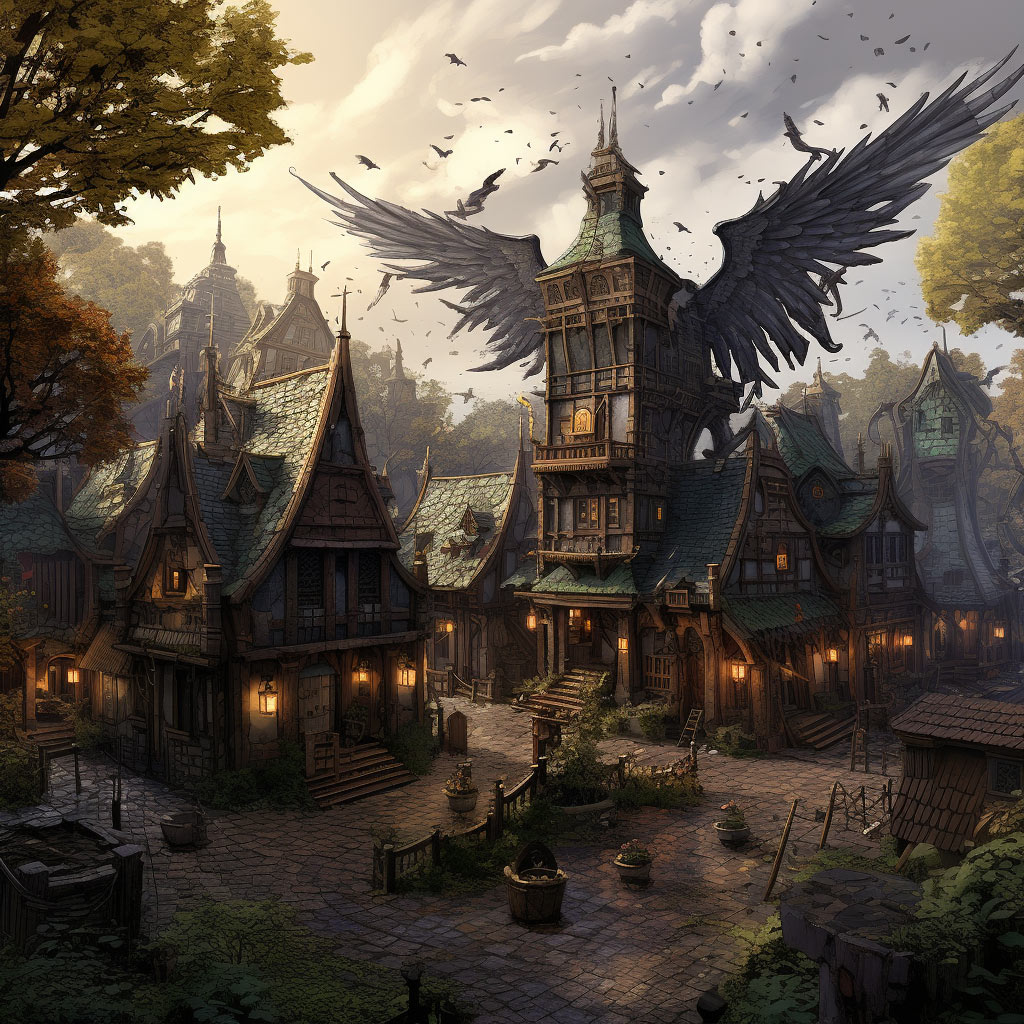
- Labor and Workforce Systems: Establish systems for labor, employment, and workforce organization, including guilds, unions, or robotic labor forces.
- Socioeconomic Disparities: Depict income inequalities, social classes, and wealth distribution, exploring the impacts on societies and individuals.
- Cultural Elders or Wise Councils: Create revered elders or councils that guide and advise societies based on wisdom and experience.
- Criminal Underworld: Develop criminal organizations, smuggling rings, or black markets that operate outside the law, impacting societal stability.
- Technological Ethics and Regulations: Address moral dilemmas surrounding technology, such as AI rights, cloning, or genetic engineering.
- Non-Humanoid Sentient Species: Design intelligent species differing greatly from humans, exploring their societies, languages, and interactions with humanity.
- Metaphysical Realms or Dimensions: Explore alternate dimensions, spiritual realms, or parallel universes that influence or interact with the main world.
- Matriarchal or Patriarchal Societies: Create societies where either women or men hold predominant societal roles, affecting power structures and cultural norms.
- Cultural Astronomy and Navigation: Develop unique star maps, navigation techniques, or celestial significance within different cultures.
- Memory Manipulation Technology: Invent technologies or techniques that alter or manipulate memories, impacting societal structures and conflicts.
- Environmental Activism or Movements: Incorporate movements or groups advocating for environmental preservation or conservation efforts.
- Artificial Intelligence Integration: Explore societies where artificial intelligence coexists with humans, examining roles, rights, and ethical dilemmas.
- Psychic Abilities or Mind Powers: Introduce characters with psychic abilities or mind powers, affecting interpersonal relationships and societal perceptions.
- Isolated Colonies or Outposts: Create isolated colonies or outposts on distant planets or remote areas, exploring their autonomy and interactions with the outside world.
- Agricultural or Terraforming Technology: Showcase technology used for terraforming planets or enhancing agricultural productivity in harsh environments.
- Cultural Death Rituals: Develop rituals, ceremonies, or traditions surrounding death and mourning, influencing societal perspectives on mortality.
- Urban Planning and City Design: Design cities with unique architectures, layouts, and infrastructures that reflect cultural values and advancements.
- Parallel Time Realities: Explore the concept of parallel timelines or alternate realities coexisting, impacting characters and events.
- Invisible or Intangible Worlds: Include realms or entities that are invisible or intangible, affecting the physical world in mysterious ways.
- Mental Health Practices: Define approaches to mental health, therapy, or treatments within societies, addressing mental illnesses or well-being.
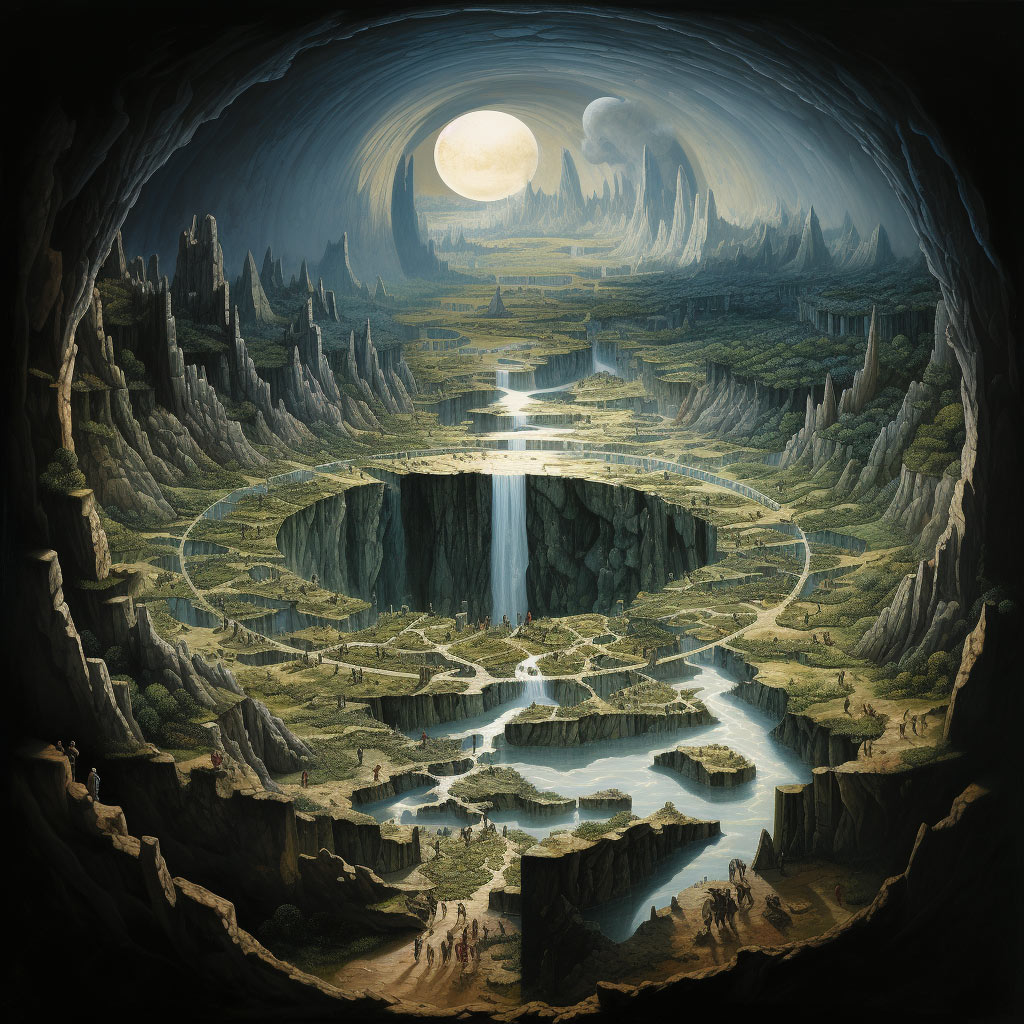
- Musical or Sound-Based Magic: Introduce magic or abilities based on music or sound manipulation that influence emotions or reality.
- Non-Linear Temporal Structures: Create societies or worlds where time doesn’t follow a linear progression, affecting storytelling and cultural perceptions.
- Extraterrestrial Threats or Invasions: Explore conflicts or interactions with extraterrestrial threats, invasions, or encounters.
- Biodomes or Habitats: Develop enclosed habitats or biodomes that support life in inhospitable environments or post-apocalyptic settings.
- Cultural Concept of Beauty: Define diverse standards of beauty or aesthetics across cultures, influencing art, fashion, and societal values.
- Body Modification Practices: Address cultural practices or technologies related to body modifications or enhancements.
- Time-Traveling Societies or Artifacts: Incorporate time-traveling societies, devices, or artifacts that impact past or future events.
- Economic Black Markets or Smuggling Rings: Introduce hidden economies or illegal trade networks, impacting societal stability and power dynamics.
- Astral Projection or Dream Realms: Explore the concept of astral projection or dream realms that characters can enter and manipulate.
- Symbiotic Relationships: Create societies or species where symbiotic relationships between different entities are essential for survival.
- Cloning or Genetic Engineering Ethics: Address ethical dilemmas surrounding cloning, genetic modifications, or designer babies within societies.
- Subconscious Realms or Inner Worlds: Explore inner or subconscious worlds characters can access, influencing thoughts and behaviors.
- Magical Plants or Ecosystems: Introduce ecosystems where plants have magical properties or abilities, impacting society and trade.
- Corporate Dominance or Mega-Corporations: Portray societies dominated by powerful corporations, exploring their influence and control.
- Living Ships or Sentient Technology: Invent ships or technology with sentient consciousness or organic components, impacting interactions.
- Experiential Devices or Reality Alteration: Incorporate devices or experiences that alter reality or perceptions, affecting societies or individuals.
- Existential or Metaphysical Crises: Explore existential dilemmas or crises faced by societies or individuals, impacting beliefs and actions.
- Cosmic Events or Cosmic Phenomena: Include cosmic-scale events or phenomena that impact entire galaxies or universes, affecting worlds and civilizations.
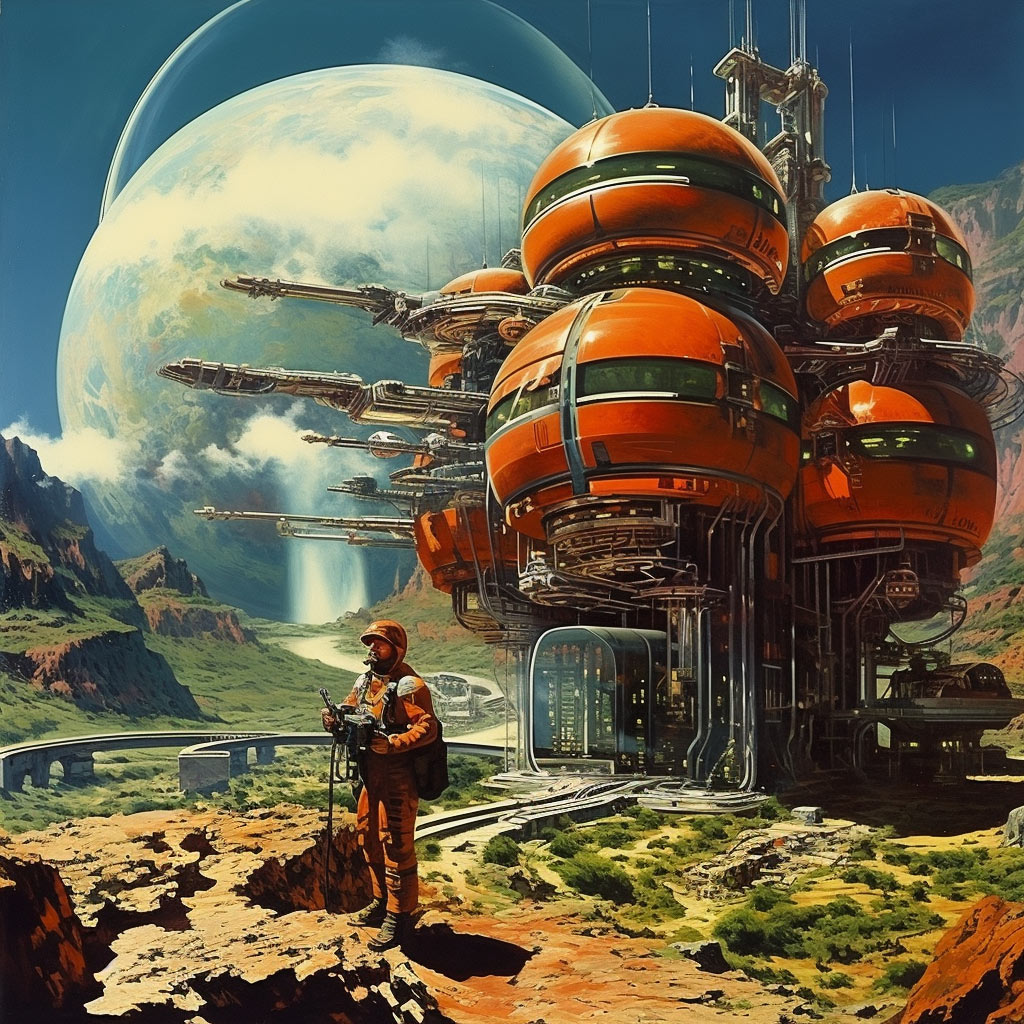
Let us know in the comments if you think we missed any useful worldbuilding tips. We hope these worldbuilding tips above can further enrich the depth, complexity, and uniqueness of the fictional world you’re creating, allowing for diverse storytelling possibilities and immersive settings.
Let us know what you think about our ideas! Comment below to give us your opinion, add onto an existing idea, or submit one of your own!


